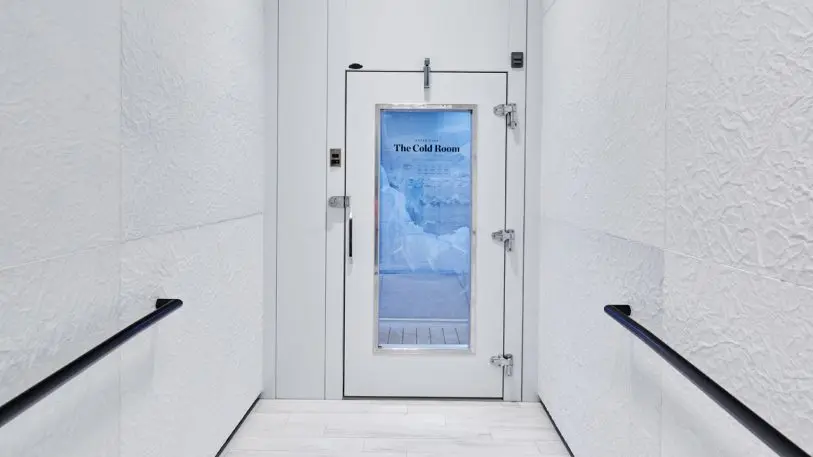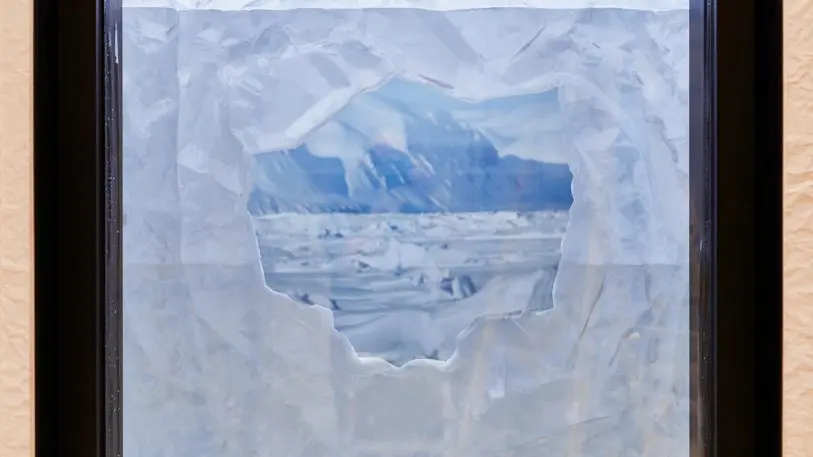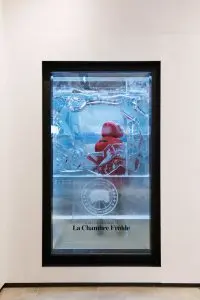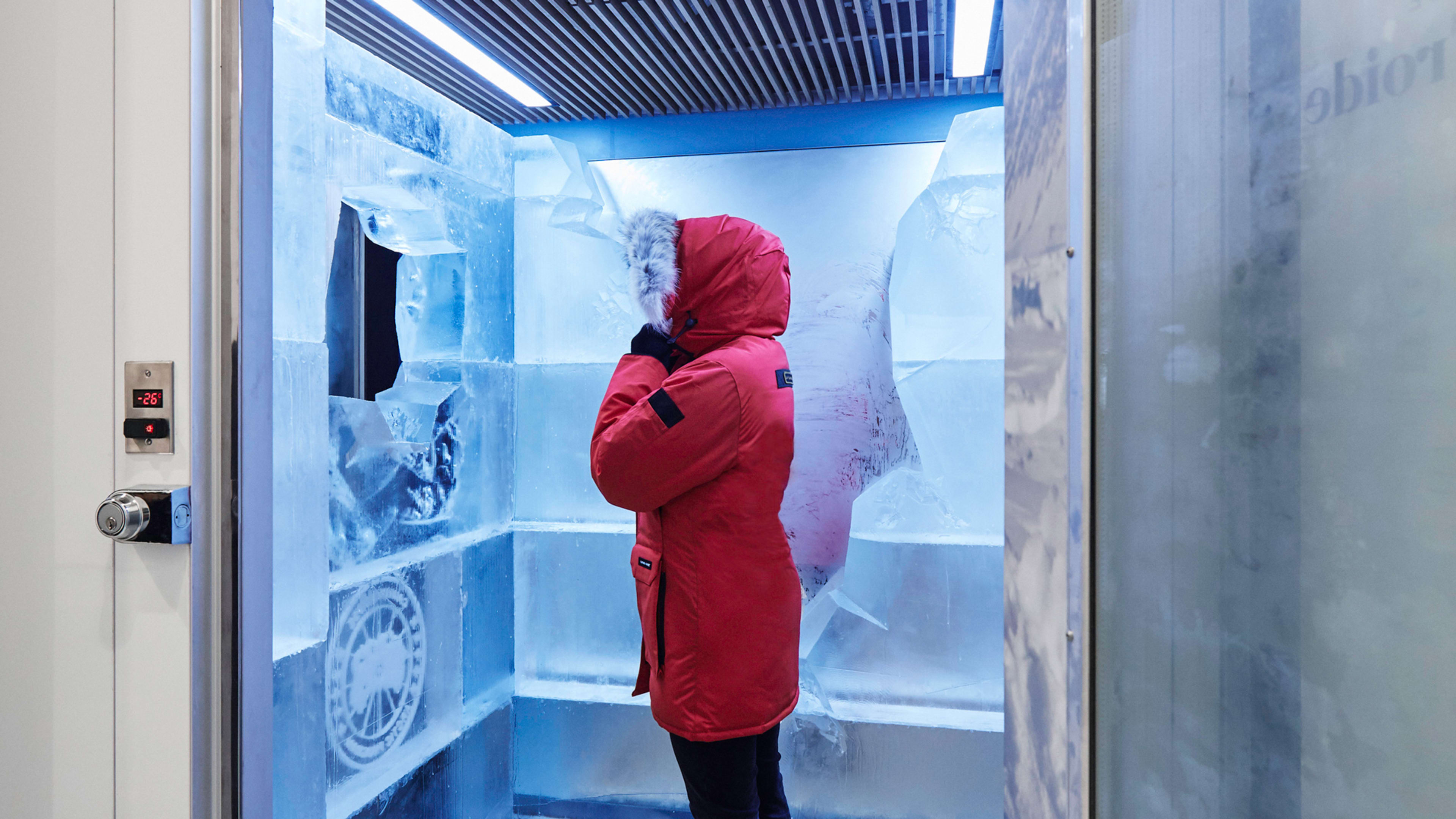It is a frigid day in Boston, but I’m excited to get even colder–with a visit to Canada Goose’s downtown store and its Cold Room. The room is self-explanatory: It’s a small space, surrounded by ice sculptures, where the temperature has been set to -27 degrees Fahrenheit. Inside, customers can put Canada Goose jackets to the test.
I’ve decided to try on the Snow Mantra, a $1,550 jacket Canada Goose developed for people who work in the coldest places in the world, including National Science Foundation researchers who work in Antarctica. The store assistant helps me into the parka, then the two of us enter the Cold Room. I’ve never experienced temperatures this low before, so it’s interesting to feel how my body responds. While my face feels like it’s about to fall off in the freezing air and my eyes are smarting, my parka-covered torso feels quite toasty.

The Cold Room, which opened in Boston during the summer, has been a big attraction for Canada Goose fans. The brand has already opened Cold Rooms five of its 11 stores, including in Beijing and Montreal. On weekends, I’ve seen long lines of people lining up to have a turn inside. Some of these guests seem to see it as a novelty, a chance to experience arctic temperatures. Others seem more focused on genuinely testing out the coats before they make a purchase, since Canada Goose gear is notoriously expensive. The bottom line is that the Cold Room blends both entertainment and functionality, making it a good example of experiential retail that actually serves a purpose.
Over the last few years, brands have desperately sought ways to bring customers back into physical stores. You can’t blame them. We’ve been hearing about the retail apocalypse for years, as thousands of stores around the country have shuttered and companies with large retail footprints have gone bankrupt. Since 2017, more than 10,000 brick-and-mortar stores have closed.
But brands also realize that wooing people into stores is valuable: It can deepen a customer’s loyalty and increase their lifetime spending. So retailers have resorted to all sorts of weird and wacky things to entice consumers into the store. Bidet brand Tushy and bathroom spray Poo-Pourri opened what they described as a “Poopup Shop” that had a toilet-shaped ball pit complete with poop emoji stuffed toys. M&M invited consumers to vote on the next candy flavor, and opened a pop-up in New York full of selfie opportunities, like a giant coffee maker to highlight a new espresso flavor and a room covered in pink bean bags to highlight a raspberry flavor. Now-defunct smart luggage brand Raden was famous for turning its stores into art exhibits, suspending suitcases from the ceiling in interesting patterns.

It’s all gotten a little silly, and all of the stunts and gimmicks are all beginning to blend together, which totally defeats the purpose of a company investing so much money to create a memorable in-person experience for customers. But what’s a brand to do? This culture of “immersive” and “experiential” retail has trained customers to expect more when they go shopping–but people are looking for more than just a superficial, carnivalesque experience.
I think Canada Goose is on the right track here. The Cold Room is a fun, unusual experience that also helps customers make more informed shopping decisions. “We’ve found that the Cold Room is very exciting to customers right now, but we think it will continue to have value long after the novelty factor has worn off,” says Dani Reiss, Canada Goose’s president and CEO. “It means customers can explore buying a coat in the summer months, when it’s hot outside.”
As the company initially toyed with ideas for in-store experiences for customers, Reiss says his team tried not to get carried away, but kept coming back to the brand’s core mission. “We’re fundamentally a functional outerwear brand,” he says. “And so it makes sense to give our customers a way to test out product.”
Lauren McGrath, VP of studio and strategy at influencer marketing company Activate, has thought a lot about experiential retail because many brands bring in influencers to help develop these concepts. McGrath says that she’s seen many companies go off track when they focus entirely on grabbing people’s attention, and less on what they stand for as a brand.
“Brands should stay laser-focused on their own heritage,” she says. “They shouldn’t waste a valuable storytelling opportunity. And at the very least, use the experience to enhance the customer’s experience in some way.”

There are other brands that are on the right track with their in-store experiences, too. Take Nadaam, a cashmere company. During the holidays, it opened a store in New York selling just one product, its $75 cashmere sweater. The store itself was colorful and fun, with clouds of cashmere wool hanging from the ceiling. But the store told a story about Nadaam’s commitment to disrupting the cashmere supply chain to offer high-grade cashmere at such affordable prices, with little little placards that hilariously recounted the brand’s origin story, in which the founders went to Mongolia with plastic bags full of cash to buy cashmere directly from goat herders. And since all the store assistants were also trained in monogramming, customers could get their sweaters monogrammed on the spot.

All of these in-store experiences help the customer in some way. And importantly, they allow brand representatives to engage with customers in new ways.
Which brings me back to the Cold Room. Ordinarily, I tend to be an antisocial shopper, brushing off the efforts of sales assistants who talk to me about products. But I had no choice but to go through the Cold Room experience with the help of a brand representative, who helped me find a coat that provided the right amount of protection from the cold, and helped me enter the room. And this meant that I had a much more prolonged experience with Canada Goose than I would have had otherwise, in a quick visit to the store.
While Reiss describes Canada Goose as an outdoor brand, its high price points mean that many people perceive it as a luxury brand as well. And many luxury brands have a reputation for being standoffish. Salespeople at high-end stores are known for being cold and unfriendly, particularly to patrons who don’t look like they are in the market to make a purchase, and the stores themselves are sterile and severe. But with the Cold Room, Canada Goose has created a way for the representatives of the brand to be welcoming and engaging. A certain proportion of people visiting the store have no intention of buying a jacket, but are just curious about the Cold Room experience. This gives the brand an opportunity to make a good impression on people who are not yet Canada Goose customers, but might be some day.
When I got home later that day, I posted a picture of me in that big red parka, surrounded by enormous blocks of ice in the Snow Room. It got a surprising number of likes. Just because it’s a useful experience doesn’t mean it can’t also go viral.
Recognize your brand’s excellence by applying to this year’s Brands That Matter Awards before the early-rate deadline, May 3.
